|
 |
 Автор: Williams Автор: Williams
 Дата: 1 сентября 2017 Дата: 1 сентября 2017
 Просмотров: 2 916 Просмотров: 2 916 |
| |
John Michael Rotter - Buckling of Steel Shells, European Design Recommendations
Eurocode 3, Part 1-6, 5th Edition
ECCS, 2008
pdf, 374 pages, english
ISBN: 92-9147-000-92
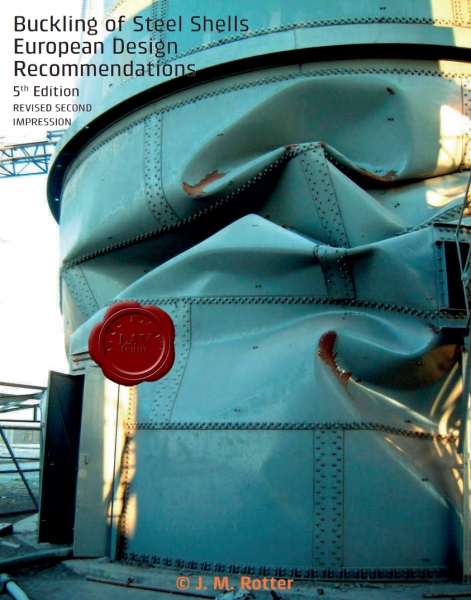
Metal shell structures have a very wide range of civil engineering applications, from towers, masts, wind turbine towers and chimneys to large storage vessels such as silos, tanks and biodigesters, as well as in pile foundations and harbour wall structures. A shell structure delivers great strength for a limited amount of material, and is highly optimised for each specific application. But this efficiency and optimisation brings with it both a susceptibility to buckling failures and the most complex behaviour of any class of structure. This book provides the designer with a comprehensive guide to the structural design of large metal shells, using either algebraic treatments or computer calculations of various complexities. It is closely based on the world’s leading standard on shell structural design, Eurocode 3 Part 1.6 (EN 1993-1-6), which includes extensive generic rules for all metal shells. This book provides an essential background and explanation of the rules, and extends them significantly. Using this book, the designer can confidently design large metal shells for a wide range of civil engineering applications. |
| |
 Читать статью дальше (комментариев - 18)
Читать статью дальше (комментариев - 18)
| |
|
 |
 Автор: Williams Автор: Williams
 Дата: 9 августа 2017 Дата: 9 августа 2017
 Просмотров: 1 406 Просмотров: 1 406 |
| |
John Siegenthaler - Modern Hydronic Heating
for residential and light commercial buildings
Delmar, 2012
pdf, 746 pages, english
ISBN-13: 978-1428335158
ISBN-10: 1428335153
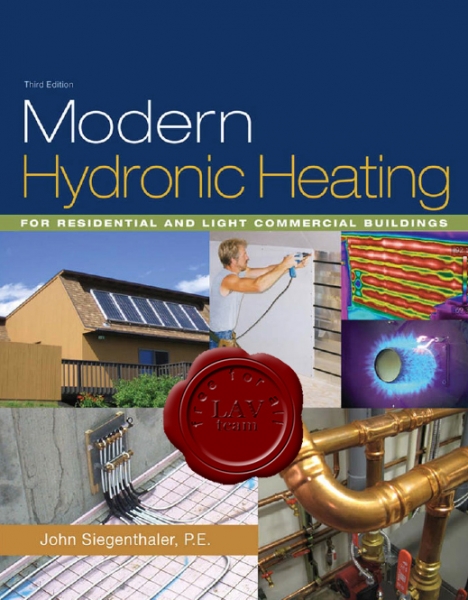
This book, like its preceding editions, is about state-of-the-art hydronic heating systems for residential and light commercial buildings. It was written to provide comprehensive, contemporary, and unbiased information for heating technology students, as well as heating professionals. |
| |
 Читать статью дальше (комментариев - 12)
Читать статью дальше (комментариев - 12)
| |
|
 |
 Автор: Williams Автор: Williams
 Дата: 7 августа 2017 Дата: 7 августа 2017
 Просмотров: 2 331 Просмотров: 2 331 |
| |
Darko Beg, Ulrike Kuhlmann, Laurence Davaine, Benjamin Braun - Design of Plated Structures
Eurocode 3: Design of Steel Structures
Part 1-5: Design of Plated Structures
Wiley, 2011
pdf, 290 pages, english
ISBN: 978-3-433-02980-0
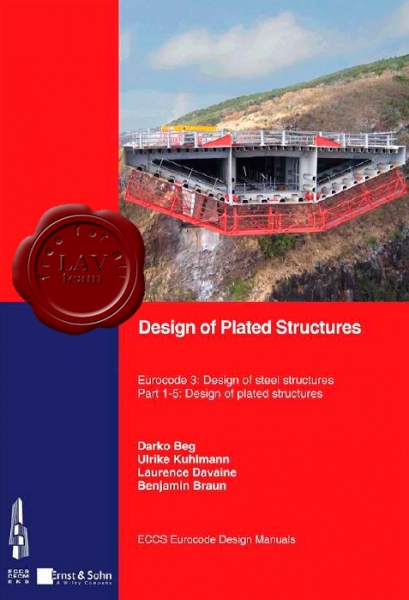
The main aim of this book is to provide practical advice to designers of plated structures for correct and efficient application of EN 1993-1-5 design rules. In chapter 1 the purpose, the scope and the structure of the book is explained. In chapter 2 a rather detailed and commented overview of EN 1993-1-5 design rules is given following the structure of the standard. Shear lag effect as well as plate buckling problems due to direct stresses, shear forces, transverse forces and interactions of these effects are covered. This chapter also includes a reduced stress method and a finite element analysis approach to plate buckling problems. A large number of design examples illustrate the proper application of individual design rules. Chapter 3 and 4 bring two complete design examples on a crane runway and a box-girder bridge. |
| |
 Читать статью дальше (комментариев - 16)
Читать статью дальше (комментариев - 16)
| |
|
 |
 Автор: Williams Автор: Williams
 Дата: 20 июля 2017 Дата: 20 июля 2017
 Просмотров: 2 292 Просмотров: 2 292 |
| |
Jean-Marc Franssen, Paulo Vila Real - Fire Design Of Steel Structures
Eurocode 1: Actions on structures. Part 1-2 – General actions – Actions on structures exposed to fire
Eurocode 3: Design of steel structures. Part 1-2 – General rules – Structural fire design
Wiley, 2012
pdf, 447 pages, english
ISBN: 978-92-9147-099-0
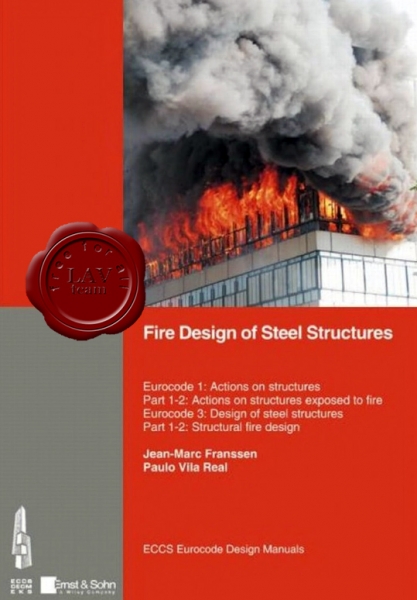
Designing for fire is an important and essential requirement in the design process of buildings and civil engineering structures. Within Europe the fire resistance requirements for buildings are specified in the national Building Regulations. All buildings must meet certain functional requirements and these are usually linked to the purpose and height of the building. For the purpose of this publication, the most important requirement is for the building to retain its stability for a reasonable period. This requirement has traditionally been linked to the required time of survival in the standard fire test. The most common method of designing a steel structure for the fire condition is to design the building for the ambient temperature loading condition and then to cover the steel members with proprietary fire protection materials to ensure that a specific temperature is not exceeded. Although this remains the simplest approach for the majority of regular steel framed buildings, one of the drawbacks with this approach is that it is often incorrectly assumed that there is a one to one correspondence between the survival time in the standard fire test and the survival time in a real fire. This is not the case and real fire can be more or less severe than the standard fire test depending on the characteristics of the fire enclosure.
The fire parts of the Eurocodes set out a new way of approaching structural fire design. To those more familiar with the very simple prescriptive approach to the design of structures for fire, the new philosophy may appear unduly complex. However, the fire design methodology in the Eurocodes affords the designer much greater flexibility in his approach to the subject. The options available range from a simple consideration of isolated member behaviour subject to a standard fire to a consideration of the physical parameters influencing fire development coupled with an analysis of the entire building.
The Eurocode process can be simplified in to three components consisting of the characterisation of the fire model, a consideration of the temperature distribution within the structure and an assessment of the structural response to the fire. Information on thermal actions for temperature analysis is given in EN 1991-1-2 and the method used to calculate the temperature rise of structural steelwork (either protected or unprotected) is found in EN 1993-1-2. The design procedures to establish structural resistance are set out in EN 1993 but the actions (or loads) to be used for the assessment are taken from the relevant parts of EN 1991.
This publication follows this sequence of steps. Chapter 2 explains how to calculate the mechanical actions (loads) in the fire situation based on the information given in EN 1990 and EN 1991. Chapter 3 presents the models that may be used to represent the thermal actions. Chapter 4 describes the procedures that may be used to calculate the temperature of the steelwork from the temperature of the compartment and Chapter 5 shows how the information given in EN 1993-1-2 may be used to determine the load bearing capacity of the steel structures. The methods used to evaluate the fire resistance of bolted and welded connections are described in Chapter 7. In all of these chapters the information given in the Eurocodes is presented in a practical and usable manner. Each chapter also contains a set of easy to follow worked examples.
Chapter 8 describes a computer program called ‘Elefir-EN’ which is based on the simple calculation model given in the Eurocode and allows designers to quickly and accurately calculate the performance of steel components in the fire situation. Chapter 9 looks at the issues that a designer may be faced with when assessing the fire resistance of a complete building. This is done via a case study and addresses most of the concepts presented in the earlier chapters. Finally the annexes give basic information on the thermal and mechanical properties for both carbon steel and stainless steel.
The concepts and fire engineering procedures given in the Eurocodes may seem complex to those more familiar with the prescriptive approach. This publication sets out the design process in a logical manner giving practical and helpful advice and easy to follow worked examples that will allow designers to exploit the benefits of this new approach to fire design. |
| |
 Читать статью дальше (комментариев - 13)
Читать статью дальше (комментариев - 13)
| |
|
 |
 Автор: Williams Автор: Williams
 Дата: 17 июля 2017 Дата: 17 июля 2017
 Просмотров: 1 913 Просмотров: 1 913 |
| |
N.S. Trahair, M.A. Bradford, D.A. Nethercot, L. Gardner -
The Behaviour and Design of Steel Structures to Eurocode 3
fourth edition
Taylor & Francis, 2008
pdf, 513 pages, english
ISBN10: 0–415–41865–8 (hbk)
ISBN10: 0–415–41866–6 (pbk)
ISBN10: 0–203–93593–4 (ebk)
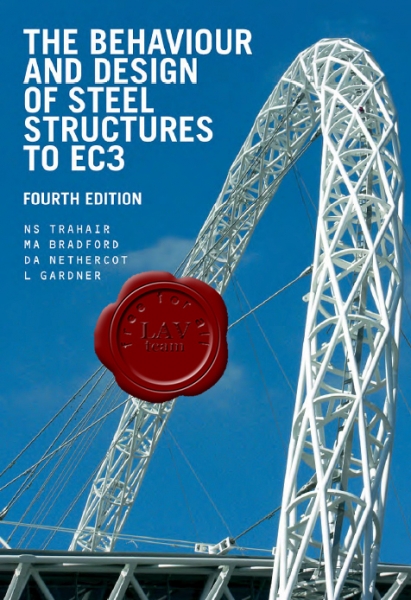
The fully revised fourth edition of this successful textbook fills a void which will arise when British designers start using the European steel code EC3 instead of the current steel code BS5950. The principal feature of the forth edition is the discussion of the behaviour of steel structures and the criteria used in design according to the British version of EC3. Thus it serves to bridge the gap which too often occurs when attention is concentrated on methods of analysis and the sizing of structural components. Because emphasis is placed on the development of an understanding of behaviour, many analytical details are either omitted in favour of more descriptive explanations, or are relegated to appendices. The many worked examples both illustrate the behaviour of steel structures and exemplify details of the design process. The Behaviour and Design of Steel Structures to EC3 is a key text for senior undergraduate and graduate students, and an essential reference tool for practising structural engineers in the UK and other countries. |
| |
 Читать статью дальше (комментариев - 11)
Читать статью дальше (комментариев - 11)
| |
|
 |
 Автор: Williams Автор: Williams
 Дата: 15 июля 2017 Дата: 15 июля 2017
 Просмотров: 2 767 Просмотров: 2 767 |
| |
Thomas T. C. Hsu and Y. L. Mo - Unified Theory Of Concrete Structures
Wiley, 2010
pdf, 520 pages, english
ISBN: 978-0-470-68874-8
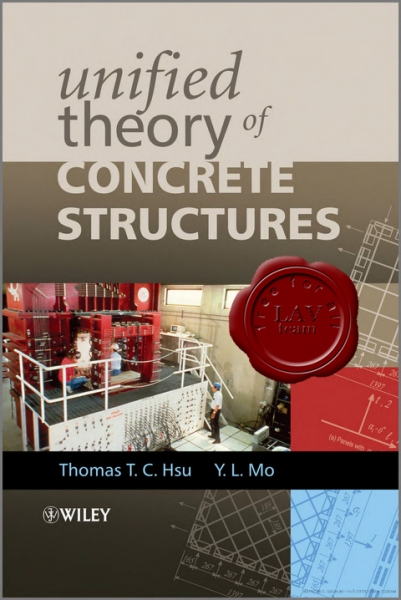
Unified Theory of Concrete Structures develops an integrated theory that encompasses the various stress states experienced by both RC & PC structures under the various loading conditions of bending, axial load, shear and torsion. Upon synthesis, the new rational theories replace the many empirical formulas currently in use for shear, torsion and membrane stress.
The unified theory is divided into six model components: a) the struts-and-ties model, b) the equilibrium (plasticity) truss model, c) the Bernoulli compatibility truss model, d) the Mohr compatibility truss model, e) the softened truss model, and f) the softened membrane model. Hsu presents the six models as rational tools for the solution of the four basic types of stress, focusing on the significance of their intrinsic consistencies and their inter-relationships. Because of its inherent rationality, this unified theory of reinforced concrete can serve as the basis for the formulation of a universal and international design code.
- Includes an appendix and accompanying website hosting the authors’ finite element program SCS along with instructions and examples.
- Offers comprehensive coverage of content ranging from fundamentals of flexure, shear and torsion all the way to non-linear finite element analysis and design of wall-type structures under earthquake loading.
- Authored by world-leading experts on torsion and shear.
|
| |
 Читать статью дальше (комментариев - 15)
Читать статью дальше (комментариев - 15)
| |
|
 |
 Автор: Williams Автор: Williams
 Дата: 13 июля 2017 Дата: 13 июля 2017
 Просмотров: 3 714 Просмотров: 3 714 |
| |
Luis Simoes da Silva, Rui Simoes, Helena Gervasio - Design of Steel Structures
Eurocode 3 - Design of Steel Structures
Part 1-1 - General Rules and Rules for Buildings
Wiley, 2013
pdf, 456 pages, english
ISBN 78-92-9147-115-7
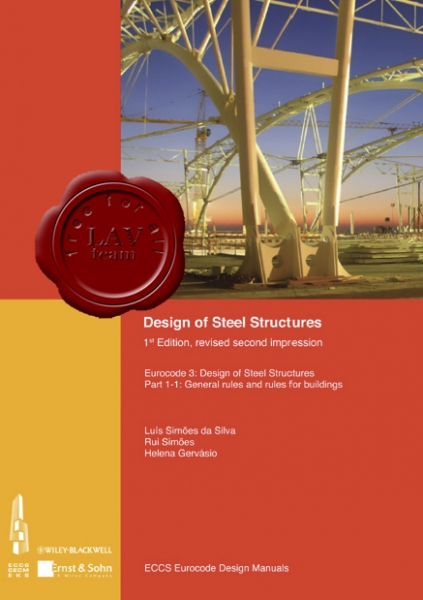
This book introduces the design concept of Eurocode 3 for steel structures in building construction, and their practical application. Following a discussion of the basis of design, including the limit state approach, the material standards and their use are detailed. The fundamentals of structural analysis and modeling are presented, followed by the design criteria and approaches for various types of structural members. The following chapters expand on the principles and applications of elastic and plastic design, each exemplified by the step-by-step design calculation of a braced steel-framed building and an industrial building, respectively. Besides providing the necessary theoretical concepts for a good understanding, this manual intends to be a supporting tool for the use of practicing engineers. In order of this purpose, throughout the book, numerous worked examples are provided, concerning the analysis of steel structures and the design of elements under several types of actions. These examples will provide for a smooth transition from earlier national codes to the Eurocode. |
| |
 Читать статью дальше (комментариев - 17)
Читать статью дальше (комментариев - 17)
| |
|
 |
 Автор: Williams Автор: Williams
 Дата: 6 июля 2017 Дата: 6 июля 2017
 Просмотров: 2 714 Просмотров: 2 714 |
| |
Nayef Ghasem - Computer Methods in Chemical Engineering
CRC, 2011
pdf, 513 pages, english
ISBN 9781439849996
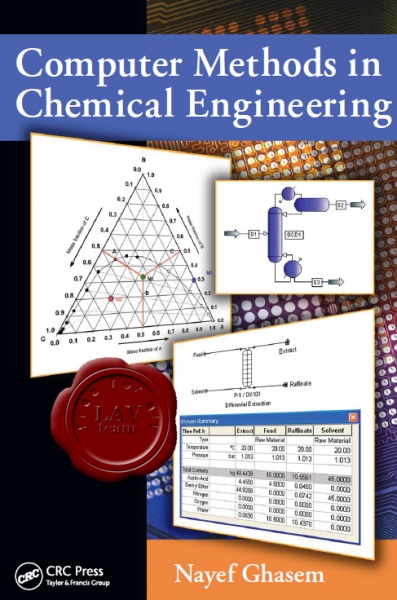
In industry, complicated problems are often not solved by hand for two reasons: human error and time constraints. There are many different simulation programs used in industry, depending on field, application, and desired simulation products. When software is used to its full capabilities, it is a very powerful tool for a chemical engineer in a variety of fields, including oil and gas production, refining, chemical and petrochemical processes, environmental studies, and power generation. Although most of the software packages are user friendly, considerable effort must be expended to master these softwares.
Software packages, such as PRO/II, Hysys/Unisim, Aspen Plus, and Design Pro, have been developed to perform rigorous solutions of most unit operations in chemical engineering. However, as a design engineer, one always needs to know the fundamental theory and methods of calculation to enable one to make decisions about the validity of these black box packages to verify the results. Most software packages are interactive process simulation programs. They are user-friendly and powerful programs that can be used to solve various kinds of chemical engineering processes. However, various conditions and choices have to be provided in order to solve a problem; good knowledge about the process is needed to be used effectively. The objective of this book is to introduce chemical engineering students to the most commonly used simulation softwares and the theory in order to cover core chemical engineering courses. The book is very useful in covering the application parts in various core chemical engineering courses such as chemical engineering thermodynamics, fluid mechanics, material and energy balances, mass transfer operations, reactor design, computer applications in chemical engineering, and also in graduation projects and in industrial applications.
Each chapter in Computer Methods in Chemical Engineering contains a theoretical description of process units followed by numerous examples solved by hand calculations and simulation with the four software packages, Hysys/Unisim, PRO/II, Aspen Plus, and SuperPro Designer, through step-by-step instructions. The book is perfect for students and professionals and gives them the tools to solve real problems involving mainly thermodynamics and fluid phase equilibria, fluid flow, material and energy balances, heat exchangers, reactor design, distillation, absorption, and liquid–liquid extraction. |
| |
 Читать статью дальше (комментариев - 15)
Читать статью дальше (комментариев - 15)
| |
|
 |
 Автор: Williams Автор: Williams
 Дата: 3 июля 2017 Дата: 3 июля 2017
 Просмотров: 4 190 Просмотров: 4 190 |
| |
Claudio Bernuzzi, Benedetto Cordova - Structural Steel Design to Eurocode 3 and AISC Specifications
Wiley, 2016
pdf, 534 pages, english
ISBN 9781118631287
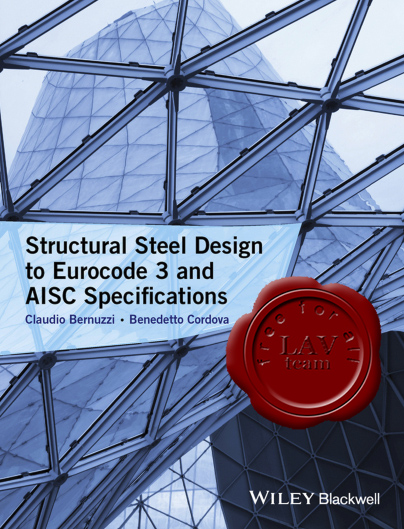
Structural Steel Design to Eurocode 3 and AISC Specifications deals with the theory and practical applications of structural steel design in Europe and the USA. The book covers appropriate theoretical and background information, followed by a more design‐oriented coverage focusing on European and United States specifications and practices, allowing the reader to directly compare the approaches and results of both codes. Chapters follow a general plan, covering: A general section covering the relevant topics for the chapter, based on classical theory and recent research developments A detailed section covering design and detailing to Eurocode 3 specification A detailed section covering design and detailing to AISC specifications Fully worked examples are using both codes are presented. With construction companies working in increasingly international environments, engineers are more and more likely to encounter both codes. Written for design engineers and students of civil and structural engineering, this book will help both groups to become conversant with both code systems. |
| |
 Читать статью дальше (комментариев - 26)
Читать статью дальше (комментариев - 26)
| |
|
 |
 Автор: Williams Автор: Williams
 Дата: 30 июня 2017 Дата: 30 июня 2017
 Просмотров: 1 202 Просмотров: 1 202 |
| |
Wolfram Lohse, Jörg Laumann, Christian Wolf - Stahlbau 1
Bemessung von Stahlbauten nach Eurocode mit zahlreichen Beispielen
Springer, 2016
pdf, 579 pages, german
ISBN 978-3-8348-0867-7, DOI 10.1007/978-3-8348-2058-7
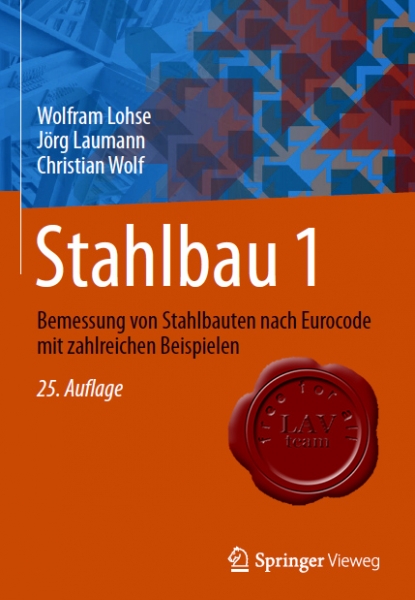
Erfolgreiches Bauen setzt neben dem Wissen von Werkstoffeigenschaften und Korrosions- und Brandverhalten fundierte Kenntnisse in der Statik und Festigkeitslehre, aber auch eine gründliche Ausbildung in den wesentlichen Konstruktionsprinzipien dieser speziellen Bauweise voraus. Das Buch widmet sich diesen Konstruktionsprinzipien und vermittelt das hierfür notwendige Grundwissen. Es werden die wichtigsten Konstruktions- und Bemessungsregeln für Vollwandträger, Fachwerkträger, Fachwerke, Kranbahnen, Rahmentragwerke sowie für Tragelemente mit dünnwandigen Querschnittsteilen behandelt. Neben der ausführlichen zeichnerischen Dokumentation der Konstruktionen werden in verständlicher und umfassender Weise die zugehörigen Nachweise in Form vieler Berechnungsbeispiele dargestellt. Basis aller Berechnungen sind nun die neuen deutschen (DIN 18800-1 bis -2) und europäischen Normen (EC 3 [Stahlbau]). Die Verbundkonstruktionen aus Stahl und Beton werden auf der Grundlage des EC 4 [Verbundbau] in einem eigenen Abschnitt behandelt. Ebenfalls sind Dauer- und Betriebsfestigkeit des Stahls bei dynamischer Beanspruchung mit den zugehörigen Nachweisen ein ausführliches Thema in diesem Buch. |
| |
 Читать статью дальше (комментариев - 12)
Читать статью дальше (комментариев - 12)
| |
|
 |
| ПОИСК ПО САЙТУ |
 |
|
 |
| КАЛЕНДАРЬ | | |
 |
| « Октябрь 2025 » |
|---|
| Пн | Вт | Ср | Чт | Пт | Сб | Вс |
|---|
| | 1 | 2 | 3 | 4 | 5 | | 6 | 7 | 8 | 9 | 10 | 11 | 12 | | 13 | 14 | 15 | 16 | 17 | 18 | 19 | | 20 | 21 | 22 | 23 | 24 | 25 | 26 | | 27 | 28 | 29 | 30 | 31 | |
|
 | |
| |
|